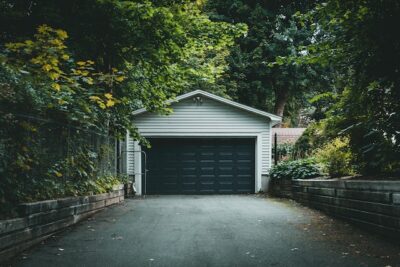When it comes to protecting your classroom floors, there are a few helpful tips that you can follow in order to keep them looking their best. By taking some preventative measures and being careful with how you use your furniture and equipment, you can avoid scratches and other damage that can be difficult to repair.
Use chair glides
One of the best ways to protect your floors from scratches is to use chair glides. You can use chair glides to prevent marks on the floor by attaching them to the legs of chairs. These are small, plastic, or metal discs that are placed under the legs of chairs and other furniture. They help to create a smooth surface so that the furniture can slide across the floor without damaging it. Chair glides are relatively inexpensive and easy to install, so they are well worth the investment.
Use caster cups or glides
If you have chairs or other pieces of furniture with casters or wheels, be sure to use caster cups or glides on them. Caster cups or glides can help to prevent scratches on your floors by providing a smooth surface for the wheels of chairs and other furniture to roll on. These will help to prevent the wheels from scratching your floors as they are moved around. Be sure to choose the right size cups or glides for your particular type of furniture. In addition, be sure to check the weight limit of the cups or glides before using them, and always test them out on a small area of your floor first to be sure they won’t damage it.
Place furniture and heavy equipment carefully
Another tip for protecting your floors is to be careful with any furniture or heavy equipment that you use in your classroom. When moving furniture around your classroom, be careful not to drag it across the floor. This can easily scratch the surface of your floors. Instead, lift the furniture and carry it to its new location. If you need to move heavy pieces of furniture, place them on top of a piece of plywood, a mat, or another protective surface before sliding them across the floor.
In addition, be sure to place furniture carefully so that it doesn’t rub against the walls or other surfaces. This can create scratches that are difficult to remove. If you’re using chairs with casters, make sure they’re the right type for your flooring. Some types of casters can damage certain types of floors.
Use mats and rugs
One of the best ways to protect your floors from scratches is to use floor mats or rugs in high-traffic areas. Placing a mat at each entryway can help to catch dirt and debris before it has a chance to scratch the floor. This will help to catch any dirt, grit, or debris that could potentially scratch the surface of your floors. Be sure to choose mats or rugs that are made from durable materials that can withstand heavy foot traffic.
Be mindful of high heels
High heels can also damage floors, so it’s important to be mindful of this when you’re in your classroom. If possible, try to avoid wearing heels or have students remove them before entering the room. If you must wear heels, walk carefully and avoid clicking them on the floor, as this can cause scratches. You can also consider getting them fitted with padded tips.
Be mindful of your shoes
You probably think of your shoes as something that just gets you from point A to point B. But did you know that the type of shoes you wear can actually have a big impact on the floors in your classroom?
The type of shoes you wear can also have an impact on your floors. Wearing shoes with hard soles, like high heels or dress shoes, can scratch up your floors and make them look dull over time. If you want to protect your floors and keep them looking their best, it’s best to avoid wearing these types of shoes in the classroom.
Instead, opt for softer-soled shoes, like sneakers or flats. These types of shoes are less likely to damage your floors and will help keep them looking new.
Also, shoes can track in dirt and debris that can scratch your floors. To help protect them, place a mat or rug at all entrances to your classroom and encourage your students to take their shoes off before entering. If possible, take off your shoes when you’re inside the classroom so that you don’t accidentally scratch the floor.
Clean up spills immediately
If you spill something on your classroom floors, it’s important to clean it up immediately. Otherwise, the substance can seep into the flooring and cause permanent damage. Use a soft cloth or sponge to blot up the spill, then follow with a mild cleaning solution designed for the specific type of flooring in your classroom. If the stain is particularly stubborn, you may need to call in a professional cleaner.
Avoid using harsh cleaning products
When cleaning your floors, avoid using harsh chemicals or cleaners that could potentially damage the surface. Over time, these products can damage the floor’s finish, making it more susceptible to scratches. Instead, opt for milder soaps and cleaners that are specifically designed for use on floors. Also, avoid using abrasive scrubbers. Be sure to follow the manufacturer’s instructions carefully when using any type of cleaner on your floors.
Vacuum regularly
Be sure to vacuum your classroom floors regularly, as this will help to prevent scratches from happening in the first place. This will help to prevent dirt and debris from being ground into the floor, causing scratches. Be sure to use a soft brush attachment on your vacuum to avoid scratching the floor surface. If you have a busy classroom with lots of foot traffic, you may want to vacuum daily.
Sweep regularly
Regular sweeping will help to keep dirt and debris from accumulating on your floors and causing scratches. Be sure to use a soft-bristled broom or dust mop to avoid scratching the surface.
By following these helpful tips, you can protect your classroom floors from scratches and other damage. By taking some simple precautions, you can keep your floors looking their best for years to come.










